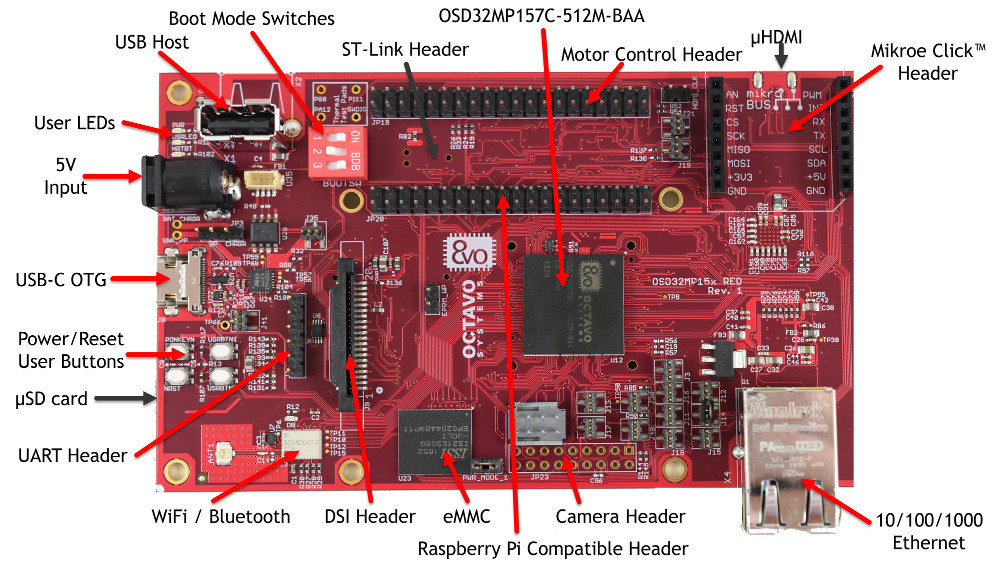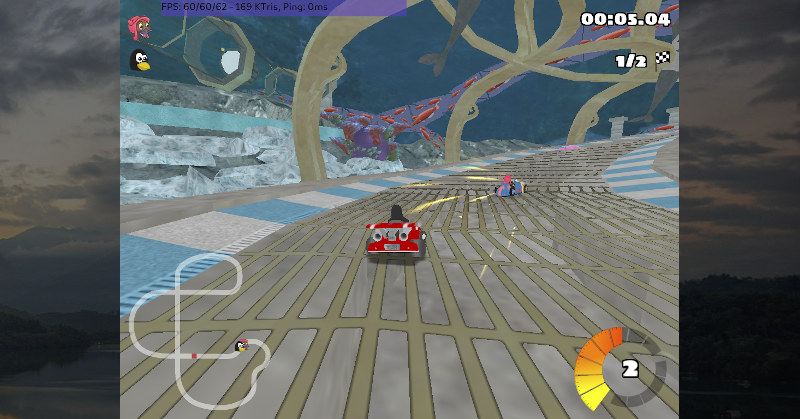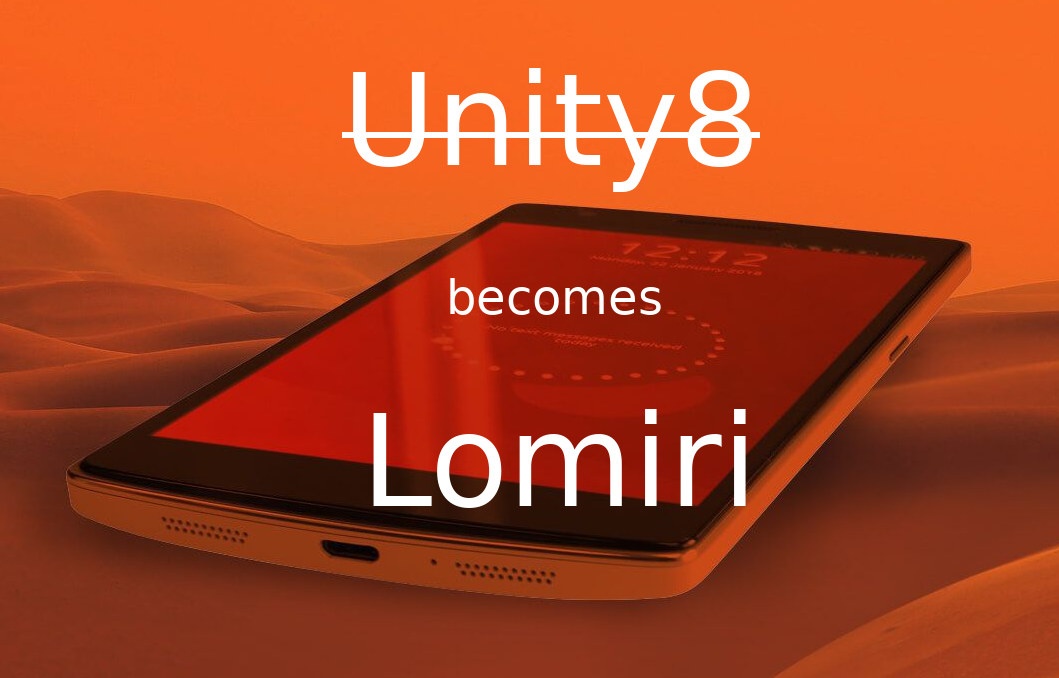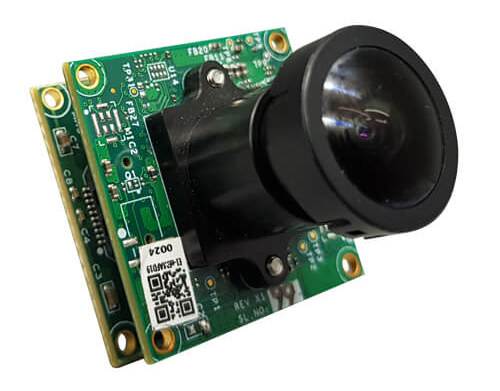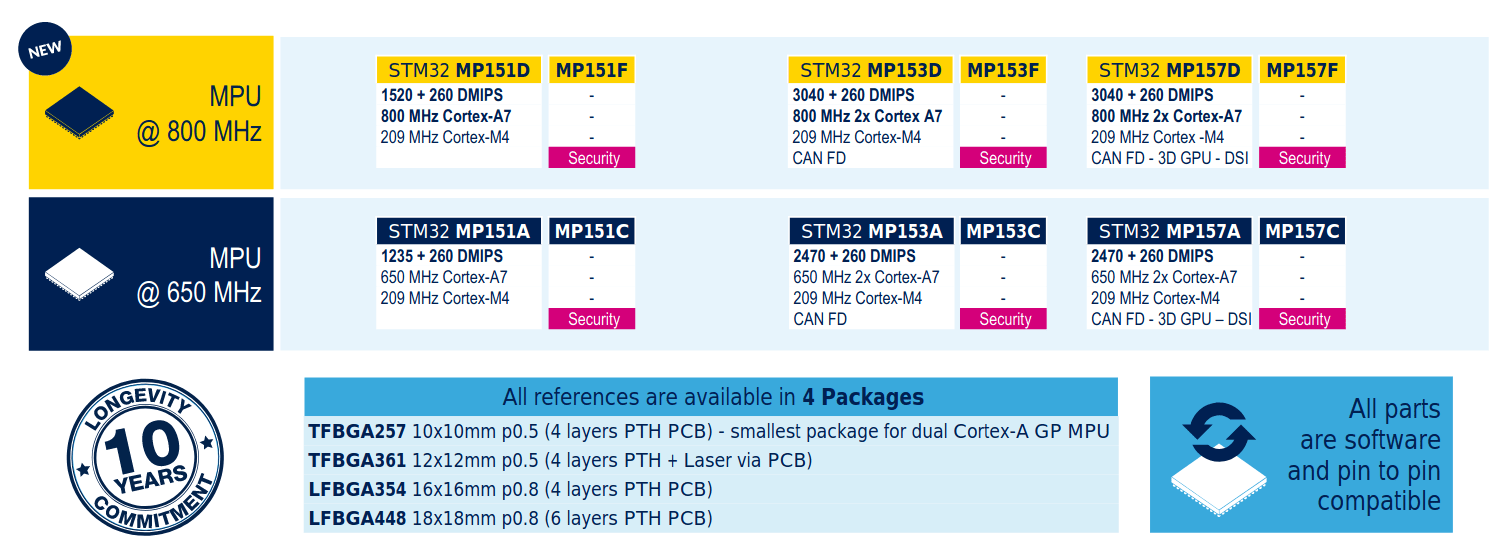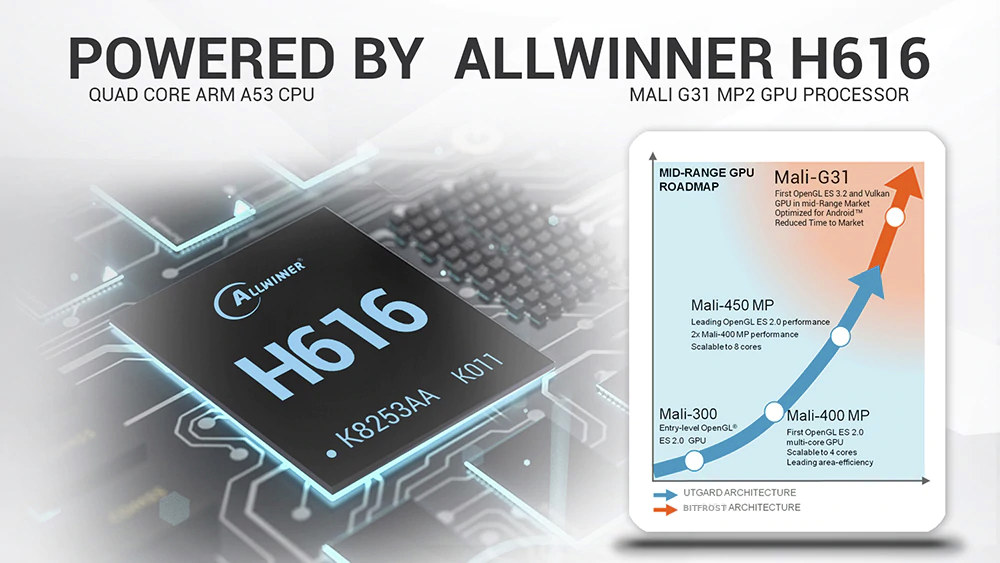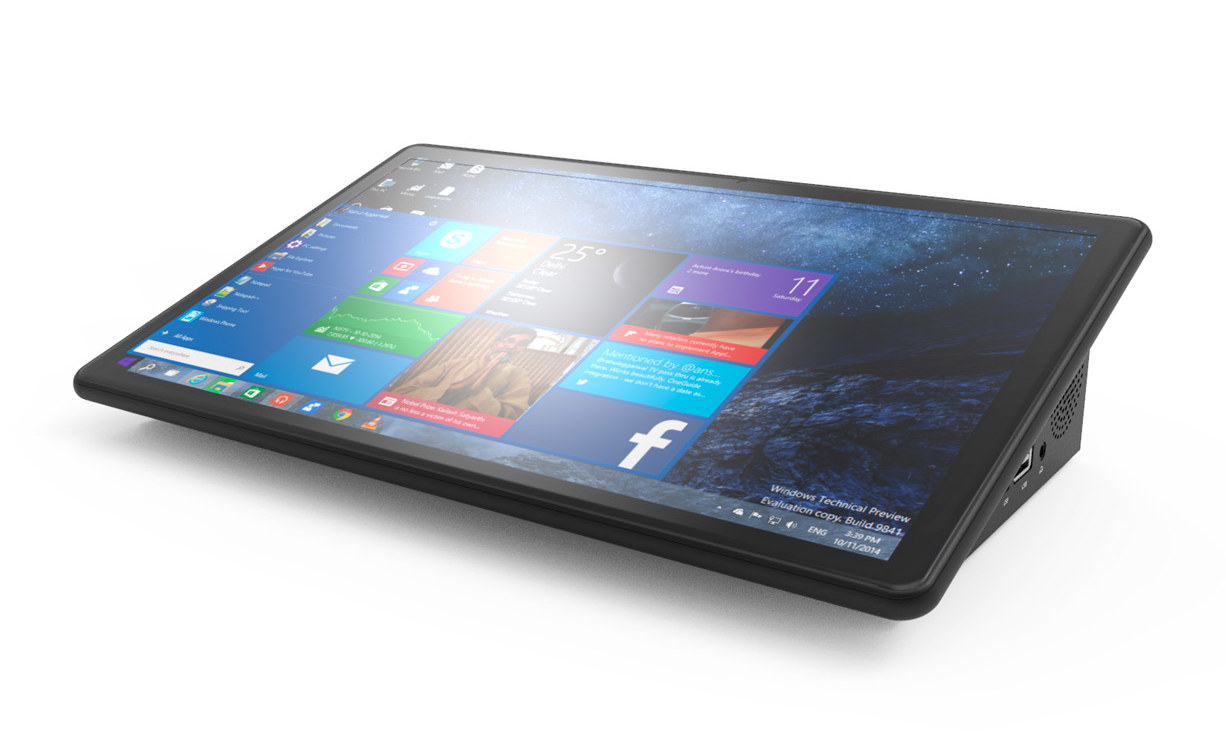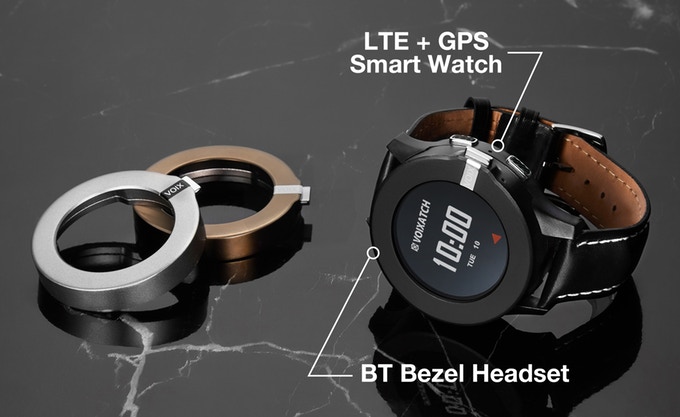Announced in February 2019, STM32MP1 Cortex-A7/M4 processor family recently got an update with 24 new SKU’s boosting the Cortex A7 core frequency to 800 MHz instead of just 650 MHz for the SoC’s announced last year. One of the first companies to take advantage of the new parts will be Octavo Sytems that unveiled OSD32MP1 system-in-package (SiP) last year combining STM32MP15x MPU, up to 1GB RAM, 4K EEPROM, STPMIC1 power management IC, two oscillators, and over 100 passive components into a single chip. The company also introduced two upcoming development kits for the STM32MP1 based SiP: OSD32MP1-BRK “Flexible Prototyping Platform” and the more featured OSD32MP1-RED evaluation & development board. Both boards are supported by OpenSTLinux which we covered in our previous articles about STM32MP1. OSD32MP1-BRK Breakout board for OSD32MP1 SiP The first board aims to provide easy access to the I/O of the STM32MP1 processor via breadboard compatible headers, and […]
Panfrost Open-Source Arm Mali GPU Driver Gets Experimental OpenGL ES 3.0 Support
Panfrost is the open-source driver being developed for Arm Midgard and Bitfrost GPUs. The first versions focused on support for OpenGL ES 2.0, but the more recent OpenGL ES 3.0 enables faster and more realistic rendering. The goods news is that Panfrost support for experimental OpenGL ES 3.0 has landed in Mesa according to a recent post on Collabora blog. Specifically, Panfrost now supports instanced rendering, primitive restart, uniform buffer objects, 3D textures, and multiple render targets (on Mali T760 and up) all of which are OpenGL ES 3.0 features. People who are not into graphics development may not know about the purpose of those features, but Alyssa Rosenzweig, a free software graphics hacker leading Panfrost, explains: … instanced rendering and primitive restart allow developers to write faster graphics applications, to render efficiently scenes more complex than possible in ES 2.0. … uniform buffer objects and 3D texture give developers […]
UBPorts Unity8 Convergence Environment Becomes Lomiri
Back in April 2017, Canonical decided to refocus Ubuntu development for the Cloud and IoT, dropping their mobile/desktop convergence efforts. So Unity8 environment was dropped in favor of GNOME desktop environment, which to this date is still used in recent versions of Ubuntu Desktop operating system. As a reminder, Unity8 was both suitable for desktop PCs, as well as smartphones and tablets through Ubuntu Touch. But at the time, it was working fairly well, even found in devices such as BQ Aquaris M10 tablets. Since the code was open source, UBPorts developer community was formed and a few months later they released their first image for supported phones such as OnePlus One, FairPhone 2, or Optimus L90. The community is still active, and until recently kept using Unity8 name, but there were some drawbacks Unity8 will now become Lomiri pronounced “Low-mee-ree”. So why did they change exactly? A few reasons: […]
e-Con Systems Launches MIPI CSI-2 Cameras for Google Coral Dev Board
Google Coral Development Board Camera Series e-Con Systems has announced a camera series that can be used with the Google Coral Development board. There are two models: e-CAM50 CUCRL is a 5.0 MP MIPI CSI-2 camera and e-CAM30 CUCRL is a 3.4 MP MIPI CSI-2 camera. Both Have Features In Common Both support a variety of resolutions and were developed for AI devices. The cameras are color and fixed focus and can be connected directly to the Coral Development Board through P1 and J15 camera connector. Background on Google Coral Development Board The Google Coral Development board was reported on extensively since its release in 2019. Two articles for the Coral Development Board and its most recent addons are the Google Coral Development Board announcement and the Coral Development Board’s latest mPCIe and M.2 cards. Jetson Nano and Rock960 SBC’s Cameras e-Con Systems previously made cameras for other SBC’s including […]
STMicro Updates STM32MP1 Family with 800 MHz Cortex-A7 Processors
Until last year, all STM32 microcontrollers were based on Arm Cortex-M “MCU” cores, but that changed with the introduction of STM32MP1 Cortex-A7 + Cortex-M4 processor a year ago. That meant for the first time, we had an STM32 processor with an MMU capable of running Linux or Android. The company had three product lines: STM32MP157 – Dual Cortex-A7 cores @ 650 MHz, Cortex-M4 core @ 209 MHz, 3D GPU, DSI display interface and CAN FD STM32MP153 – Dual Cortex-A7 cores @ 650 MHz, Cortex-M4 core @ 209 MHz and CAN FD STM32MP151 – Single Cortex-A7 core @ 650 MHz, Cortex-M4 core @ 209 MHz All available in four different packages, and with or without hardware security (parts with A and C suffix) meaning we had a total of 24 parts. STMicro has now announced 24 more parts whose main and only difference compared to the STM32MP1 processors launched last year […]
Allwinner H616 TV Box Processor Comes with Mali G31 GPU, Supports Android 10
Allwinner H6 quad-core Cortex-A53 processor with Arm Mali-T720 GPU was launched in 2017 and made its way into various TV boxes and SBC’s. But last year, we got some news of lower-cost versions of the processor with Allwinner H603 and H6 VC200-OS SoC’s. Allwinner H616 Processor Advantages So the first time, I read about Allwinner H616, I thought it was yet another variant of little interest. But it turns out H616 is the first processor from the company with a Bitfrost GPU, namely Mali G31MP2, meaning it supports Vulkan, and down the line, it could potentially be supported by Panfrost open-source graphics driver. Another positive for the processor is support for Android 10, while AFAIK other H6 processors are stuck to Android 9.0. Another advantage is low power consumption leading to lower CPU temperature. It might be a process change or some other optimizations in the silicon, we just don’t […]
HiGole F11APL Apollo Lake Industrial Mini PC Comes with a 11.6″ Touchscreen Display
We’ve previously reviewed a few unusual mini PCs and tablets from Shenzhen Qianhai Gole Technology Co., Ltd – better known as just GOLE – such as GOLE F7 rugged tablet very recently, and before that some mini PCs with built-in display as GOLE 10. The company has now come up with an update to the latter with a more powerful Apollo Lake processor. HiGole F11APL comes with a slightly larger 11.6″ touchscreen display, but the Intel Celeron N3450 processor combined with 4GB RAM and 64GB eMMC flash storage will provide much better performance than the previous Cherry Trail-based solution. HiGole F11APL specifications: SoC – Intel Celeron N3450 quad-core Apollo Lake processor @ 1.1 GHz / 2.2 GHz (Burst frequency) and 12 EU Intel HD Graphics 500 @ 200 MHz / 700 MHz (Burst freq.); 6W TDP System Memory – 4GB LPDDR4 Storage – 64 GB eMMC flash, micro SD slot […]
VOIXATCH Smartwatch Comes with a Detachable Bluetooth Headset (Crowdfunding)
As a Kickstarter project, VOIXATCH introduces the world’s first smartwatch device which puts essential features of all the devices we carry with us in one unit. This watch does everything that smartwatches do, plus it has a built-in Bluetooth headset. Other smartwatches can be used with Bluetooth headset, but VOIXATCH has a Bluetooth ring-look-like headset docked on it, and the headset can be detached anytime and used for phone calls or listening to the music. One can call it a headset smartwatch. Cool, huh? After Mobile World Congress 2019, where Voixatch demonstrated the watch, it is finally available for “purchase” on Kickstarter rewards starting at $179 and first batch delivery expected in June. VOIXATCH embodies LTE, GPS connectivity in an all-in-one truly wireless design that can be used with Google Voice. The watch can also be used as a cellular smartwatch with a bezel headset to make calls and stay […]


